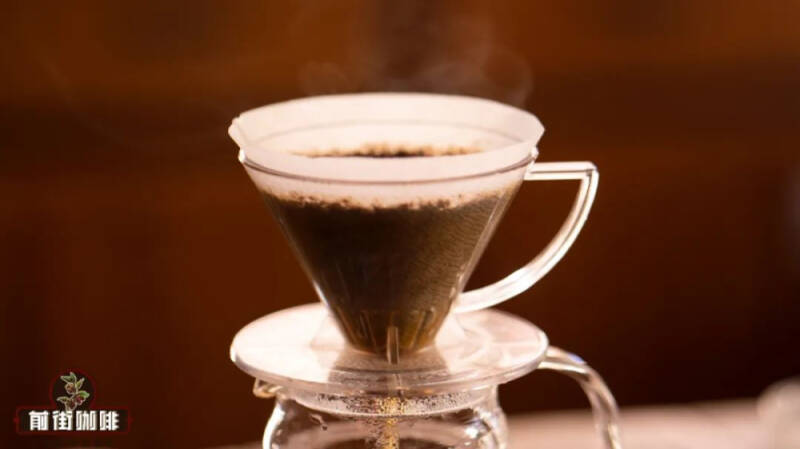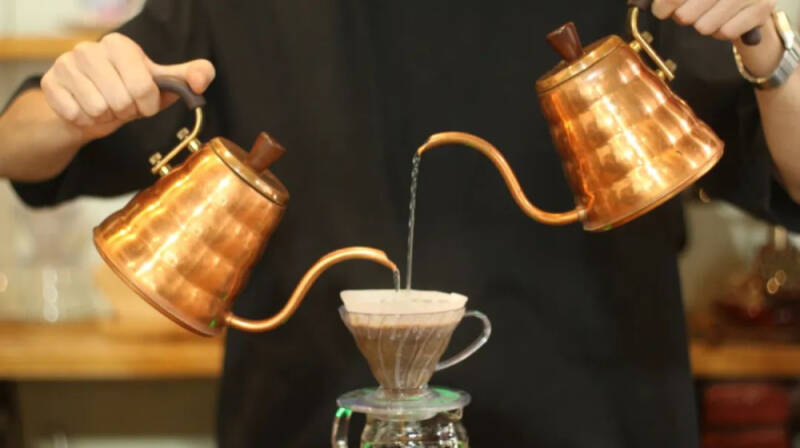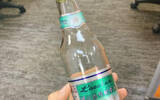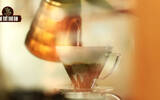Lightning protection! Self-taught yourself the knowledge that you can easily be misled when making coffee by hand! What impact will the brewing method have on coffee?
Hand-brewed coffee is a unique and convenient way to make coffee. Because of its outstanding flavor and clean taste, it has been favored by a large number of people. What's more, because of its easy operation and low threshold for input, many friends learn spontaneously at home and start hand-flushing production.

However, due to many learning channels and complex knowledge, it is easy to step into a misunderstanding when self-study is not unified. If no one corrects it, then it will continue to sink into it and make a mistake to the end. Therefore, Qianjie today would like to share the "knowledge minefields" that often mislead people in the process of self-learning hand-made coffee.
First, in the excessive pursuit of brewing, many friends are crazy to use different brewing methods before they are clear about the principle of brewing, because they will think that brewing is an important factor in changing the taste of coffee.

Although different brewing methods do bring changes to the taste of coffee, the underlying logic behind these methods will be more important than the taste they bring. You know, no matter what the brewing method is, their design philosophy will be based on a principle: heat the right amount of hot water to the right temperature, and then grind the right coffee powder for proper coffee extraction at the right time. If we cannot understand why this technique uses this water temperature, this grinding, and such a powder-to-water ratio, then what is copied is only the surface of this cooking method. If you only learn the surface, then this method of cooking can only be applied to one bean, or to a certain degree of baking. Once the beans are replaced into another bean with very different properties (baking and handling), it will be difficult for you to take advantage of the cooking method and release the flavor of the beans.
Therefore, it is more important to understand the underlying logic of cooking methods, and before that, we must first understand the relationship among water temperature, grinding and the proportion of powdered water, so that we can better understand and understand the underlying logic of cooking methods.
Second, when the steaming timing node is steaming by hand, should the timing key be pressed before or after water injection? The time difference between the two is 7-9 seconds (mainly depends on the size of the injected water). Whether this time exists or not will change the overall cooking time, and then affect our judgment of cooking. Therefore, this is a question that puzzles most people.
In general, we are talking about the extraction time from the coffee powder contact with hot water to the last drop of coffee liquid leaving the coffee powder. Therefore, when we start steaming, we need to press the timing button synchronously, because at this time the coffee powder has been extracted and the golden foam continues to burst out.
Third, steaming is not fresh steaming stage there is another point easy to cause newcomers misunderstanding, that is the powder bed drum state.
For most beginner friends, the stale performance of a bean is that it is impossible to steam a big bag in the shape of a hamburger. But in fact, the size of the powder bed drum bag is limited by the amount of carbon dioxide in the coffee powder. The more carbon dioxide, the bigger the bag. But at the same time, the existence of a large amount of carbon dioxide will also hinder the extraction of flavor substances by hot water, so some high-density beans need to be placed to discharge these carbon dioxide before extraction. At this time, although the beans can no longer be bulged when steaming, it is when it is "fresh".
Fourth, do not taste bitter, so stop the river! The filter cup is removed before the coffee is finished, an operation known in the industry as "river closure". Generally speaking, the purpose of river closure is to avoid the negative taste of coffee caused by too long extraction time. But many friends will mistakenly think that the end is a large number of bitter release nodes, so they have to cut it off. As a result, whether it is to brew or order outside, the closure will be included in the operation process.
However, friends who often read the articles in front of the street know that the coffee liquid at the end is not the reason for the bitterness of the whole cup of coffee, the extraction efficiency is too high! When our beans, extraction parameters and brewing techniques are all normal, there is no need to worry about the bitterness of the coffee at all. So please don't use river closure to avoid bitterness, the cooking data is more important.
Fifth, the pursuit of gold cup extraction is a concept born according to the taste preference of a group of people. When the extraction rate and concentration of a cup of coffee are in a certain range of values, then the taste of this cup of coffee will be welcomed by the most people. After learning this concept, some friends will determine this "standard": coffee must be brewed into the range of gold cup extraction! If the extraction rate and concentration are not in this range, then this cup of coffee must be bad!
However, you should know that the coffee in the gold cup extraction is not necessarily good, while the coffee outside the gold cup extraction range is not necessarily bad, which is based on the taste of the drinkers. And different people have different eating habits, different tastes, we can not unify everyone's preferences, so the value can not fully represent the quality of a cup of coffee. If we want to know whether a cup of coffee is good or bad, we should judge it by direct contact, that is, drinking. Instead of clinging to the numerical value, it will greatly reduce your experience space and miss out on a lot of delicious coffee!
-END-
Important Notice :
前街咖啡 FrontStreet Coffee has moved to new addredd:
FrontStreet Coffee Address: 315,Donghua East Road,GuangZhou
Tel:020 38364473
- Prev

Tims promotes the water-cooled extract of Laoshan Hedyotis chinensis, which is difficult for Qingdao people to accept
▲ Click to pay attention| Daily Boutique Coffee Culture Magazine Coffee Workshop In my country, there is a beverage that is known as the chemical and biological weapon in the beverage industry and the "living king" in the chemical and biological weapons industry. It is a Qingdao specialty that makes netizens across the country afraid-Laoshan Hedyotis chinensis Water. If you want to judge the best drink, you will definitely
- Next

Can boiling water be used to make coffee? What is the water temperature for hand flushing? Does it have to be 92°?
Once during the daily production process, a customer asked the front street: "Why doesn't anyone use boiling water at 100°C to make coffee? "Water temperature, as a 'tool' to adjust extraction speed, is often the first brewing parameter that many people pay attention to. Looking at all coffee making tutorials, water temperature recommendations are
Related
- What effect does Italian American coffee with filter paper have? Will coffee taste better if it is put on filter paper at the bottom of the powder bowl?
- What is the color difference in coffee beans? What are the characteristics of honey processed coffee beans? Why are the anaerobically treated coffee beans uneven in color?
- How does novice Xiaobai quickly get started and make coffee? Newbies learn to make coffee by hand and share the specific steps and process process!
- Costa tea has a shelf life of 100 years?! Expert: Unable to verify
- It's a huge uproar! American milk addition was rejected by Manner employees?!
- Mocha pot coffee bean recommendations| How fine and how much powder should be used for grinding? What parameter ratios do I need to use to make milk with Mocha pot coffee?
- What are the characteristics of the world's top ten coffee beans treated with Costa Rica honey? How to make black honey kadura from Tarazhu Pilon Processing Plant taste good?
- How to make deep-roasted coffee? What grinding water temperature does authentic Jamaica Blue Mountain No. 1 coffee use to brew it well?
- Selected high-grade rose summer coffee flavor tasting guide Why Panama rose summer has the aroma of flowers and fruits
- What equipment does a novice Xiaobai need to buy to learn to make coffee? Filter cup electronic scale bean grinder manual flushing pot purchase guide

